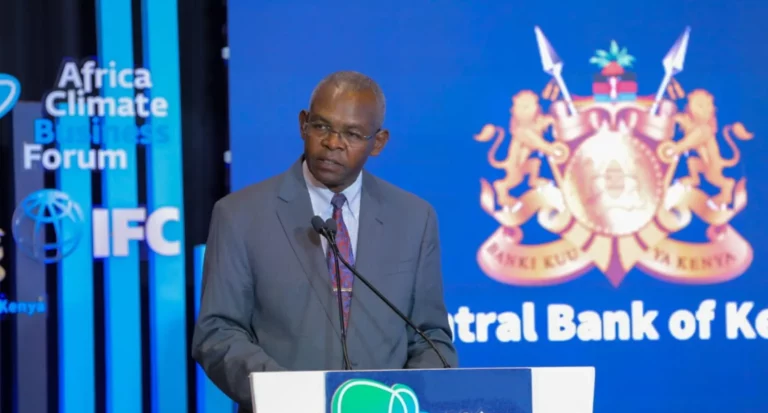The Central Bank of Kenya is buying dollars to increase foreign exchange reserves and stabilize the exchange rate. The move aims to protect the economy from potential shocks.
The Central Bank of Kenya (CBK) has been actively purchasing dollars in the foreign exchange market to build up its reserves and mitigate exchange rate volatility.
Dr Kamau Thugge Governor of the CBK and also the chairman of the Monetary Policy Committee announced this during the post-MPC briefing on Wednesday.
“We have had a significant increase in foreign exchange, both from banks, but also remittances. So, in order to moderate the fluctuations and volatility in the exchange rate, we have indeed been buying foreign exchange,” Governor Thugge noted.
Foreign exchange reserves have increased by approximately US$837 million over the past five weeks, reaching a current level of US$8.2 billion. This represents 4.2 months of import cover, exceeding the statutory requirement but falling short of the East African Community’s convergence target of 4.5 months.
The CBK’s intervention aims to address the oversupply of dollars in the market, which was particularly pronounced earlier this year due to the Eurobond buyback and infrastructure bond issuance.
The Kenyan shilling’s strength has been bolstered by increased dollar inflows, including a USD 1.2 billion loan from the World Bank under the Development Policy Operations (DPO) program.
Additionally, the US Federal Reserve’s decision to cut its benchmark interest rate by 50 basis points has created a more favourable environment for the Kenyan shilling.
By purchasing excess dollars, the CBK helps to stabilize the exchange rate and protect the economy from potential shocks.
Remittances from Kenyans living abroad have also contributed to the increase in foreign exchange reserves. The shilling has remained relatively stable against the US dollar, trading around KShs. 129, due to the strong inflows from tea exports and remittances.
In addition to managing foreign exchange reserves, the CBK cut the benchmark lending rate by 0.75% to 12.00%.
This decision, made by the Monetary Policy Committee (MPC), reflects the easing inflation and slowdown in private sector growth observed in the second quarter of 2024.




